Embarking on the journey of education is an adventure filled with challenges, triumphs, and the ever-evolving landscape of student behavior. This post is a complete guide on how to write behavior goals.
Whether you’re a seasoned educator or a fresh face in the world of teaching, the ability to navigate and address behavior is a crucial skill. In this post, we’ll be your guide through the intricacies of “How to Write Behavior Goals” – a skill that can truly transform the classroom experience for both educators and students alike.
So, buckle up as we explore the why, what, and how of crafting behavior goals that not only target specific behaviors but also pave the way for a positive and successful learning environment.
From personal anecdotes to step-by-step strategies, let’s dive into the art and science of writing behavior goals that truly make a difference.

We’ve all been there – that moment when you find yourself wondering, “How can I address this challenging behavior in my students?” Whether you’re a seasoned educator or a new teacher navigating the ins and outs of the classroom, behavior goals can be your secret weapon.
In this article, we’ll explore what behavior goals are, why they are crucial in an educational setting, and how you can identify and write them effectively.
What are Behavior Goals?
Behavior goals are like roadmaps for students, guiding them toward positive outcomes in terms of their behavior. These goals help identify and target specific behaviors that need improvement or reinforcement. They are a cornerstone of effective behavior management, providing a clear direction for both educators and students.
In my early teaching days, I had a student, let’s call him Alex, who struggled with staying focused during independent tasks.
He would often resort to task avoidance, leading to incomplete assignments and a frustrated teacher (me). It was clear we needed behavior goals to tackle this challenge head-on.
Why Do We Need to Target Behavior Goals in Education?
Picture this: a classroom where students exhibit positive social skills, regulate their behaviors, and engage effectively with the learning process. Sounds like a dream, right? Well, behavior goals make this dream a reality.
In the hustle and bustle of the school year, having behavior goals in place helps create a positive learning environment. It’s not just about addressing problem behavior; it’s about fostering a culture of self-regulation, personal responsibility, and positive social interactions.
Take my experience with Alex, for instance. By setting behavior goals, we were not just fixing a momentary issue; we were laying the groundwork for his long-term success by developing self-regulation skills and promoting a calm body during independent tasks.
Examples of Negative Student Behavior
Being Mean to the Teacher:
- Example: Sarah interrupts the teacher by saying mean things about what we’re learning. This makes the class feel not nice, and it’s not okay.
Calling Names and Hurting Feelings:
- Example: Jason calls a friend mean names that hurt their feelings. This makes the friend sad, and it’s not nice to do.
Making Fun of Friends:
- Example: Emma always makes fun of her friends in class. This makes everyone feel bad and stops us from working together.
Using Bad Words:
- Example: Michael uses bad words when talking to friends and the teacher. This makes the class feel uncomfortable, and it’s not the right way to talk.
Talking Bad About Classmates:
- Example: Alex says mean things about a friend’s work in front of everyone. This makes the class feel not good, and it’s not how we should treat each other.
Teasing During Group Work:
- Example: Sarah teases her friends when they work together. This makes it hard for everyone to get along and do their best.
Not Being Nice About Lessons:
- Example: Jason always says bad things about what we’re learning. This makes the class feel not good, and it’s not how we should talk about our lessons.
Ignoring Other People’s Ideas:
- Example: Emma always ignores what her friends say in class. This makes it hard for everyone to work together and feel included.
Not Listening to the Teacher:
- Example: Michael doesn’t listen when the teacher talks. He says mean things and makes the class feel not okay.
Saying Mean Things About How Someone Looks:
Example: Alex says mean things about a friend’s looks. This makes the class feel uncomfortable, and it’s not how we should treat each other.
Be Honest with Your Students
When it comes to fostering positive behavior in the classroom, one of my go-to strategies is to be honest and open with my students. It’s like laying the foundation for a trustworthy relationship where everyone feels seen and heard. So, here’s the deal – I’ve found that when I share my expectations transparently and let the students in on the “why” behind certain rules or behavior goals, it creates a sense of camaraderie.
You see, honesty is a two-way street. When I’m open about what I expect from them, I encourage them to be open with me. It’s like saying, “Hey, we’re all in this together, and I’ve got your back.” I remember a time when I had a particularly challenging class, and I decided to sit down with them and have an honest conversation about our classroom dynamics.
I told them about my expectations, why certain behaviors were disruptive, and how we could work together to make our learning environment the best it could be. The response was surprising – the students appreciated the honesty. They felt respected because I treated them like partners in this educational journey, not just recipients of rules.
So, when it comes to behavior goals, especially the social ones, being honest and open with your students is not just a strategy; it’s a mindset. It’s about building a community where everyone feels comfortable expressing themselves, and that, my friend, is a game-changer in the world of education.
How to Identify Behavior Goals
Identifying behavior goals might seem daunting, but fear not – it’s like detective work with a sprinkle of educational magic.
The best practice involves collecting baseline data to understand the student’s behavior before diving into goal-setting. This data might include observing the student in various situations, noting triggers for undesired behavior, and identifying patterns.
Let’s go back to Alex. Through careful observation and data collection, I noticed that his task avoidance tendencies increased when faced with an independent assignment. Armed with this information, I could now craft specific behavior goals tailored to his needs.
Start a Rewards System
Now, let’s talk about something that never fails to bring a smile to my students’ faces – starting a rewards system. Yep, you heard it right – a little positive reinforcement can go a long way in shaping those behavior goals. Trust me, it’s like adding a dash of excitement to the learning mix.
So, here’s the lowdown from my experience. When I began implementing a rewards system, I noticed an immediate shift in the classroom vibe.
It’s not just about stickers or small treats; it’s about acknowledging the efforts and achievements of each student. I remember a time when I started a “Star of the Week” program where one student was recognized for their outstanding behavior or effort.
The impact was incredible. Students were not only motivated to meet behavior goals, but they were also cheering each other on. It became a positive cycle of encouragement.
The key, I’ve found, is to make the rewards system inclusive and personalized. It’s not always about grand gestures; sometimes, a simple note of appreciation or extra recess time can work wonders.
Now, I’ll admit, I was a bit skeptical at first. I mean, would a rewards system really make a difference in behavior? But let me tell you, the transformation was remarkable. It’s like the classroom became a stage for showcasing positive behavior, and the students were the stars of the show.
So, if you’re diving into the world of behavior goals, don’t underestimate the power of a well-crafted rewards system.
It’s not just about stickers and treats; it’s about creating an environment where positive behavior is celebrated, and every student gets their moment in the spotlight.
And trust me, there’s nothing more rewarding than seeing those smiles and a classroom buzzing with positive energy.
Dinosaur Rewards Cards (hole Punch)
Are you ready to add a touch of Jurassic fun to your classroom or parenting toolbox?
Introducing our free printable Dinosaur Rewards Cards with a hole punch twist! These cards bring a roar-some approach to positive reinforcement. Each card features adorable dinosaur illustrations, making the reward experience both engaging and visually exciting for kids.
The best part? You can customize these cards with a hole punch system, allowing children to collect them and trade them in for special rewards or privileges.
It’s a fantastic way to motivate and celebrate small victories in a dino-mite style.
Download your free printable Dinosaur Rewards Cards now and embark on a journey of positive reinforcement that’s as exciting as a prehistoric adventure!
How to Write Behavior Goals Step by Step
Now, let’s get down to the nitty-gritty of writing behavior goals. Follow these steps to ensure you’re on the path to success:
1. Gather Baseline Data
Before you start writing behavior goals, collect data to understand the student’s current behavior. This could involve observing them in different situations, noting when problem behavior occurs, and identifying any patterns.
2. Define the Target Behavior
Be specific about the behavior you want to address. Instead of a vague goal like “improve focus,” try something more concrete like “complete independent assignments without task avoidance.”
3. Make Goals Measurable
Ensure your goals are measurable. This might involve tracking the frequency, duration, or intensity of the behavior. For Alex, it meant noting how often he engaged in task avoidance during independent tasks.
4. Use the SMART Goals Framework
SMART goals are Specific, Measurable, Achievable, Relevant, and Time-Bound. Applying this framework ensures your goals are clear and attainable. For example, “Alex will complete independent assignments without task avoidance in 90% of tasks over the next six weeks.”
5. Consider Replacement Behaviors
Identify replacement behaviors that can replace the undesired behavior. In Alex’s case, we introduced the use of an appropriate fidget during independent tasks as a replacement for task avoidance.
6. Involve the IEP Team
For students with Individualized Education Programs (IEPs), collaborate with the IEP team. Their insights and expertise can enhance the effectiveness of the behavior plan.
7. Plan for Data Collection
Establish a system for data collection to track progress. This could involve daily observations, weekly check-ins, or the use of a behavior chart.
8. Implement Positive Reinforcement
Reward positive behavior to reinforce the desired change. Positive reinforcement can take various forms, from verbal praise to tangible rewards. Find what works best for the individual student.
9. Be Flexible and Adjust as Needed
Not all plans go off without a hitch. Be flexible and ready to adjust the goals based on the student’s progress. Remember, it’s a journey, not a sprint.
10. Celebrate Successes
Finally, celebrate successes along the way. Small victories add up to significant changes. Acknowledge and celebrate the positive changes in the student’s behavior.
In Alex’s case, after implementing behavior goals and consistently tracking progress over a six-week period, we observed a significant reduction in task avoidance during independent tasks. Celebrations were in order!
Some Examples of Behavior Goals
Now that we’ve covered the basics of behavior goal setting, let’s delve into some real-world examples. Keep in mind that behavior goals should be tailored to individual students and their unique needs. Here are a few examples that showcase the variety of ways behavior goals can be crafted:
1. Personal Space and Social Interactions:
– *Objective:* Sarah will demonstrate improved personal space awareness during social interactions.
– *Replacement Behavior:* Sarah will maintain a distance of at least one arm’s length during conversations.
2. Positive Self-Talk and Coping Strategies:
– *Objective:* Jason will develop positive self-talk and appropriate coping strategies to manage stress.
– *Replacement Behavior:* Jason will practice positive affirmations and deep-breathing exercises when faced with stressful situations.
3. Task Avoidance and Independent Assignments:
– *Objective:* Emma will reduce task avoidance during independent assignments.
– *Replacement Behavior:* Emma will use a designated quiet space break, equipped with sensory tools, when feeling overwhelmed.
4. Undesired Peer Behavior and Social Skills:
– *Objective:* Alex will improve social skills by decreasing undesired peer behaviors.
– *Replacement Behavior:* Alex will initiate positive interactions and seek guidance from the teacher when conflicts arise.
5. Unexpected Behavior in General Education Setting:
– *Objective:* Michael will decrease unexpected behaviors in the general education setting.
– *Replacement Behavior:* Michael will utilize sticky notes to set reminders for tasks and follow a visual schedule to enhance predictability.
These examples highlight the versatility of behavior goals, targeting specific behaviors while providing replacement actions to guide students toward positive change.
Writing Behavior Goals When You Don’t Know the Skills that Need Targeting
Addressing behavior change can be challenging, especially when you’re unsure about the specific skills that need targeting. In such cases, a systematic approach can be immensely helpful. Here’s a step-by-step guide to writing behavior goals in these situations:
1. Observe and Document Behavior
Start by closely observing the student’s behavior in various settings. Note any patterns, triggers, or situations where the undesired behavior tends to occur. This observational phase helps gather valuable baseline data.
2. Collaborate with the School Team
Engage with the school team, including colleagues, special education professionals, and support staff. Their insights can provide a broader perspective on the student’s behavior and potential areas for improvement.
3. Utilize the PENT Website and Blog Posts
The PENT (Positive Environments, Network of Trainers) website is a fantastic resource for behavior intervention strategies. Explore their library of resources, including articles and blog posts, to gain insights into evidence-based practices for behavior change.
4. Focus on General Positive Behavior
While you may not pinpoint specific skills initially, start by setting goals that promote general positive behavior. Emphasize actions that contribute to a positive and inclusive classroom environment, such as respecting others, following class rules, and participating in group activities.
5. Set Time-Bound Consecutive School Week Goals
Establish short-term goals that span consecutive school weeks. This time-bound approach allows for consistent monitoring and evaluation of the student’s progress. Celebrate small victories along the way to maintain motivation.
6. Address Unexpected Behaviors
If the undesired behavior includes unexpected actions, work on goals that enhance predictability and routine. Implement visual schedules, cue cards, or other tools to provide structure and reduce anxiety.
7. Gradually Introduce Self-Regulation Strategies
Encourage the use of self-regulation strategies even if the specific skills are unclear initially. Activities like movement breaks, deep-breathing exercises, or incorporating heavy work activities can contribute to overall self-regulation.
8. Evaluate and Adjust
Regularly assess the effectiveness of the behavior goals. If progress is slow or new insights emerge, be ready to adjust the goals accordingly. Flexibility is key in addressing behavior change.
9. Consider Age-Appropriate Strategies for Older Students
For older students, incorporate age-appropriate strategies. This might include journaling for self-reflection, goal-setting exercises, or involving them in the process of choosing coping mechanisms that resonate with their preferences.
10. Seek Continuous Feedback
Maintain open communication with the student, the school team, and parents. Seek continuous feedback on the effectiveness of the behavior goals and make collaborative adjustments as needed.
In the dynamic landscape of behavior intervention, the key is to be adaptable, patient, and persistent. By following these steps and leveraging available resources, you can lay the foundation for positive behavior change, even when the specific skills needing targeting are not immediately apparent.
In the dynamic world of education, behavior goals are the compass that keeps us headed in the right direction. They transform classrooms into spaces where students develop self-regulation skills, engage positively with their peers, and thrive academically.
10 Social Behavior Goal Examples
- Effective Communication:
- Goal: Sarah will improve her communication skills by actively participating in class discussions and expressing her thoughts clearly.
- Target Behavior: Sarah will raise her hand and contribute at least two meaningful points during each class discussion.
- Active Listening:
- Goal: Jason will enhance his active listening skills to better engage with peers and teachers during instructional periods.
- Target Behavior: Jason will maintain eye contact, refrain from interrupting, and summarize key points after listening to instructions or conversations.
- Collaborative Teamwork:
- Goal: Emma will develop collaborative skills by working effectively with peers on group projects and assignments.
- Target Behavior: Emma will actively contribute to group discussions, share responsibilities, and provide constructive feedback to team members.
- Empathy and Understanding:
- Goal: Michael will cultivate empathy by demonstrating understanding and consideration towards the feelings and perspectives of classmates.
- Target Behavior: Michael will engage in at least one empathetic interaction per week, such as offering support during challenging moments or acknowledging others’ achievements.
- Respect for Personal Space:
- Goal: Alex will improve his awareness of personal space in social interactions to create a more comfortable environment for peers.
- Target Behavior: Alex will maintain a distance of at least one arm’s length during conversations and respect others’ personal space boundaries.
- Conflict Resolution:
- Goal: Sarah will develop effective conflict resolution skills to address interpersonal issues in a positive manner.
- Target Behavior: Sarah will use “I” statements to express her feelings, actively listen to the concerns of others, and work towards mutually acceptable solutions.
- Positive Self-Advocacy:
- Goal: Jason will enhance his self-advocacy skills by expressing his needs and preferences in a positive and assertive manner.
- Target Behavior: Jason will articulate his learning preferences, ask for clarification when needed, and advocate for accommodations during appropriate situations.
- Appropriate Use of Humor:
- Goal: Emma will refine her use of humor to foster positive social interactions and avoid unintended negative consequences.
- Target Behavior: Emma will gauge the appropriateness of jokes, avoiding humor that may be offensive or hurtful to others.
- Effective Turn-Taking:
- Goal: Michael will improve his ability to take turns during conversations and group activities.
- Target Behavior: Michael will wait for others to finish speaking before contributing to the conversation, fostering a more inclusive and respectful dialogue.
- Timely Arrival and Departure:
- Goal: Alex will develop punctuality habits to ensure timely arrival and departure from scheduled activities.
- Target Behavior: Alex will arrive at class or social events on time and depart without causing disruptions, promoting a smoother flow of activities.
These social behavior goals address a range of skills essential for positive social interactions, teamwork, and personal growth, providing a holistic approach to fostering a positive and inclusive learning environment.
Remember, the journey to behavioral change is unique for each student. By understanding the power of behavior goals, gathering baseline data, and following a step-by-step process, you’re not just addressing problem behavior – you’re shaping the future success of your students in a positive and impactful way.

In conclusion, mastering the art of writing behavior goals is akin to unlocking a powerful tool for fostering positive change in our classrooms. By understanding the unique needs of individual students, employing effective strategies, and embracing a collaborative approach, educators can shape environments where positive behavior flourishes.
Remember, behavior goals are not just about addressing challenges; they are about cultivating self-regulation, social skills, and a love for learning.
So, as you embark on this journey, armed with insights and practical tips, may your classrooms be spaces where behavior goals pave the way for a brighter and more successful educational experience for every student. Happy goal-setting!
Happy goal-setting!

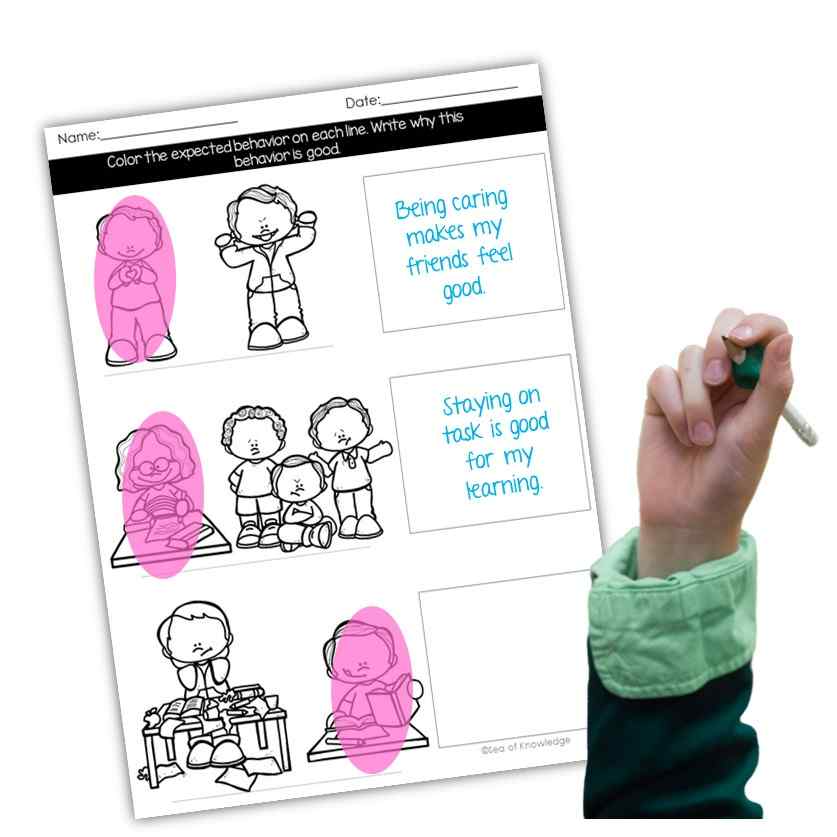
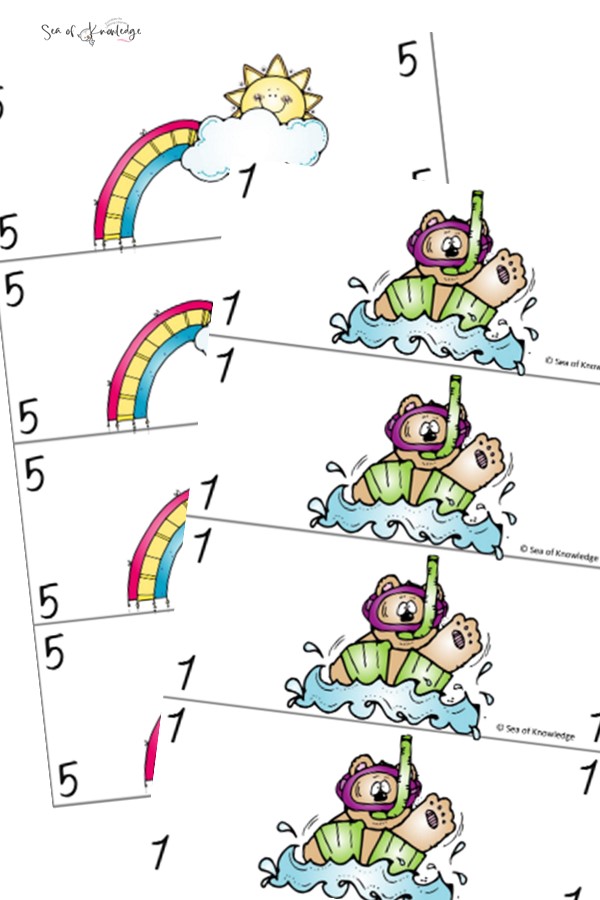
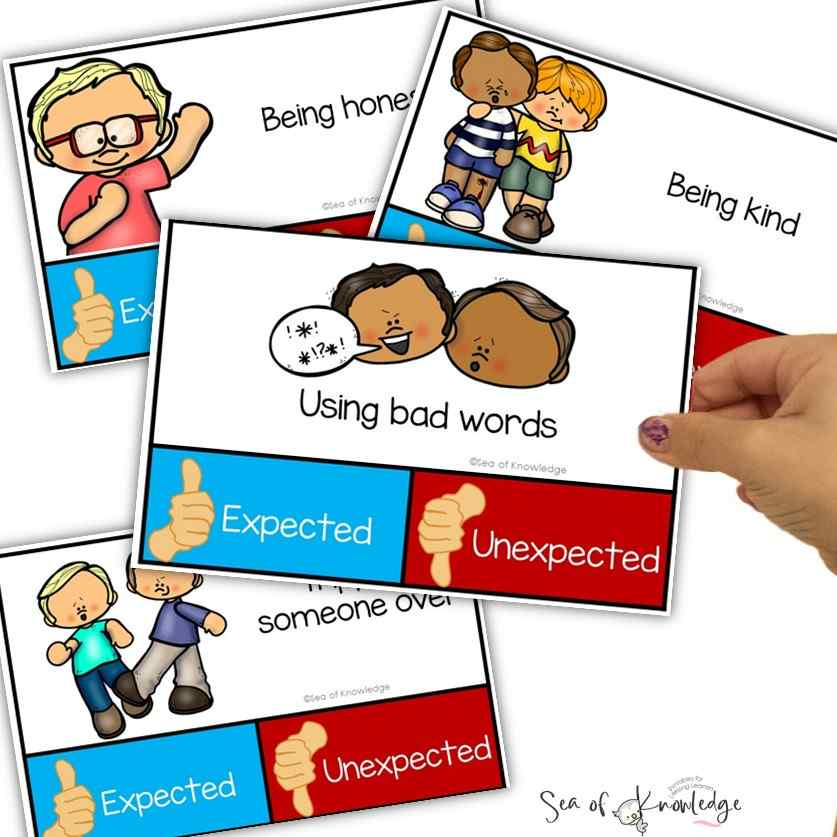




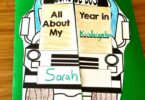
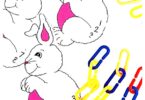
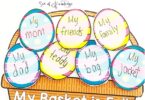
Excellent Resource! Writing behavior goals can be difficult and this information is beneficial with assisting.
You’re welcome! Thank you so much for the kind words! 🙂